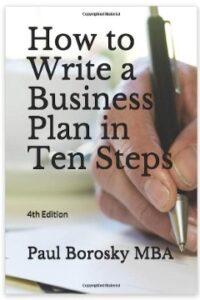How to Write an Insurance Company Business Plan and Template
The insurance agency industry has been growing moderately over the last several years, spurring the demand for insurance agency business plans, templates, and pro forma financial projections.
There are several reasons behind the consistent expansion of the insurance sector. Our insurance agency business plan expert has noted that clients in this field greatly value personal customer service and local branch presence, giving insurance agencies significant strengths and competitive edges.
The reasons for the moderate but steady growth of the insurance agency industry may vary. However, possessing a well-detailed insurance agency business plan benefits local and regional players in the market. Building on this insight, our insurance agency business plan expert offers various guidelines and recommendations for business owners who aim to draft their business plan, design a template, or create pro forma financial forecasts (9/23).
CLICK HERE TO CHECK OUT OUR INSURANCE COMPANY BUSINESS PLAN TEMPLATE!!
Executive Summary for an Insurance Company Business Plan.
The executive summary of an insurance company business plan should encapsulate critical points from every section of the business plan, with particular emphasis on the company information and financial projections sections. From what we have seen in the past, insurance business proprietors tend to allocate substantial space to delve into the target market for their insurance services. This is because the success of an insurance company heavily leans on its marketing and sales efforts.
Moreover, an insurance company's executive summary template should be designed for effortless updates. As the insurance business progresses, new products and services might be introduced, hiring more staff or expanding to broader areas, including other regions or states. With the variable nature of growth in the insurance sector, it is vital to ensure your executive summary framework is adaptable, permitting additions and deletions.
Company Information and Location.
In the company information and location segment of an insurance company business plan, it is essential to start with an outline of the types of insurance the firm will offer. Subsequently, based on our observations, insurance firms often detail which insurance carriers' products they will provision. Sometimes, they might exclusively partner with a singular insurance provider. At other times, they may collaborate with several top-tier insurance companies. Whichever the business model, it is imperative to elucidate the chosen operational structure and expound on this setup's benefits.
Need Help Writing an Insurance Agency Business Plan?
Call or Text Paul, Doctoral Candidate, MBA.
321-948-9588
Email: Paulb@QualityBusinessPlan.com
Hours of Operation: Monday through Friday, 8 am to 9 pm EST.
Our business plan writer is located in Orlando, FL.
CLICK HERE TO CONTACT US TODAY!!
Product Description and Competitive Advantages
Many insurance companies offer specific products like automobile or health insurance. Whatever your insurance company's focus, highlight it in the product description section. Elaborate on why individuals might seek out this insurance. For instance, automobile insurance is a mandatory requirement for drivers. After discussing the products, delve into your company's unique advantages against other local competitors.
Target Market for an Insurance Company Business.

Often, the focus of an insurance company's target market is geographic. Many homeowners' insurance companies might focus on residents within a 15 to 20-mile radius of their offices. This localized approach helps with broad-based marketing techniques such as mailers or social media advertising. An insurance firm may specialize in other scenarios, like focusing on renters over homeowners. With a niche focus, marketing strategies can be more tailored. A motorcycle insurance agency, for instance, might get a list of local motorcycle owners and direct marketing efforts toward them. This approach ensures that the right audience gets the right message.
Industry Research for an Insurance Company Business Plan and Template
Start your industry research on a national scale. This section should incorporate national statistics, future predictions, and prevailing trends in insurance. For instance, the insurance sector in the US currently employs millions and has had insurance premiums surpassing a trillion dollars in recent years. State Farm, a significant player, recorded massive premium values in the past. After presenting national data, narrow down to local competitors and the demographic shifts relevant to your area.
Owner and Management Section
In this business plan section, describe the business owner's background, touching on both professional and educational experiences. Discussing prior roles in the insurance domain and correlating these roles with academic achievements provides a comprehensive view of the owner's suitability to lead an insurance company.
Funding Request for an Insurance Company Business Plan.

Laying out funding needs should follow a systematic approach. Begin by listing all necessary items and then categorize these into areas like startup expenses, equipment, office expenses, and other costs. Sum up these categories and incorporate the operational funds required. This gives you the total initial funding needed. Subtract any personal contributions, and you'll have the funding gap. Detail your funding to ask, clearly indicating its application across the categories mentioned.
Financials and Financial Projections for an Insurance Company Business Plan Template.
Begin your financial projections by estimating monthly premium sales, then add anticipated renewal premiums. This gives a precise revenue estimate. Subtract monthly expenses, including labor, rent, and other overheads, to derive the projected profit for the first month. Then, using growth estimates, project annual revenues, costs, and net profits. After finalizing the financial projections, summarize vital data, such as first-year revenues and net profits, five-year profit projections, and maybe a significant ratio, like return on equity, in the executive summary.
Hopefully, these insightful tips and tricks for writing a business plan were helpful. Email or call us if you need help with a business plan or financial projections.
Author: Paul Borosky, Doctoral Candidate, MBA., Author
Owner of: Quality Business Plan and Quality Business Consultant.
Date: 9/27/2023